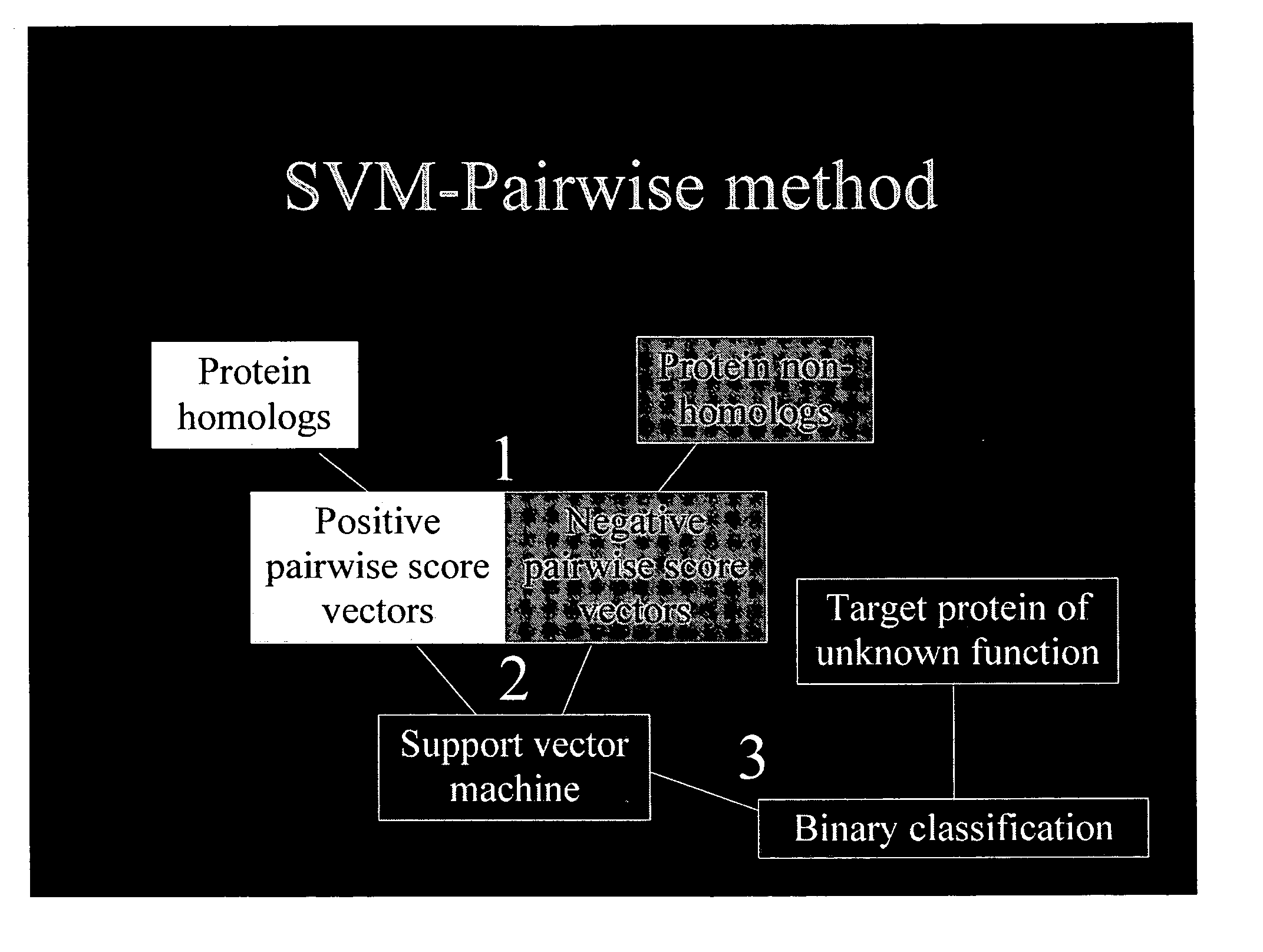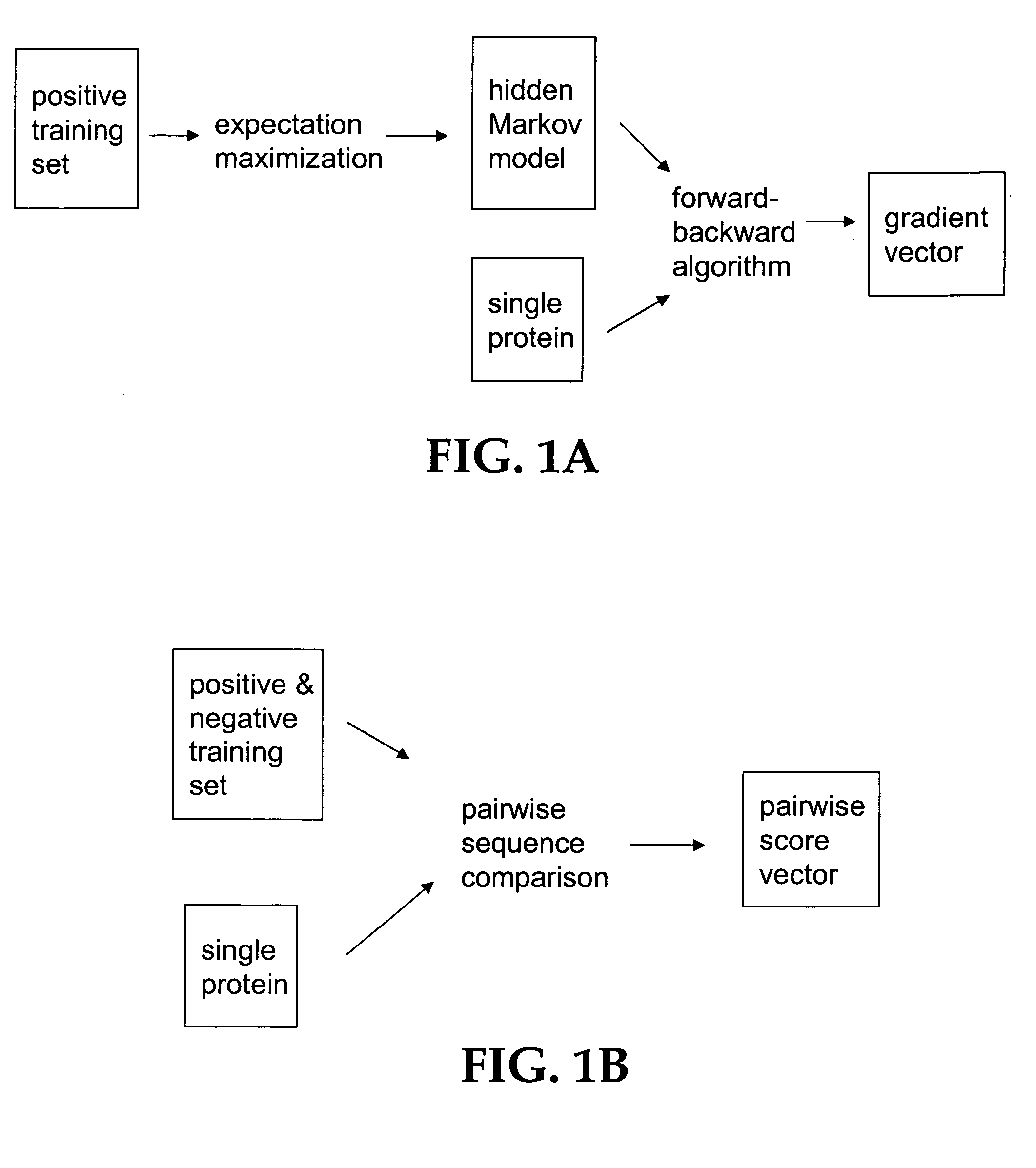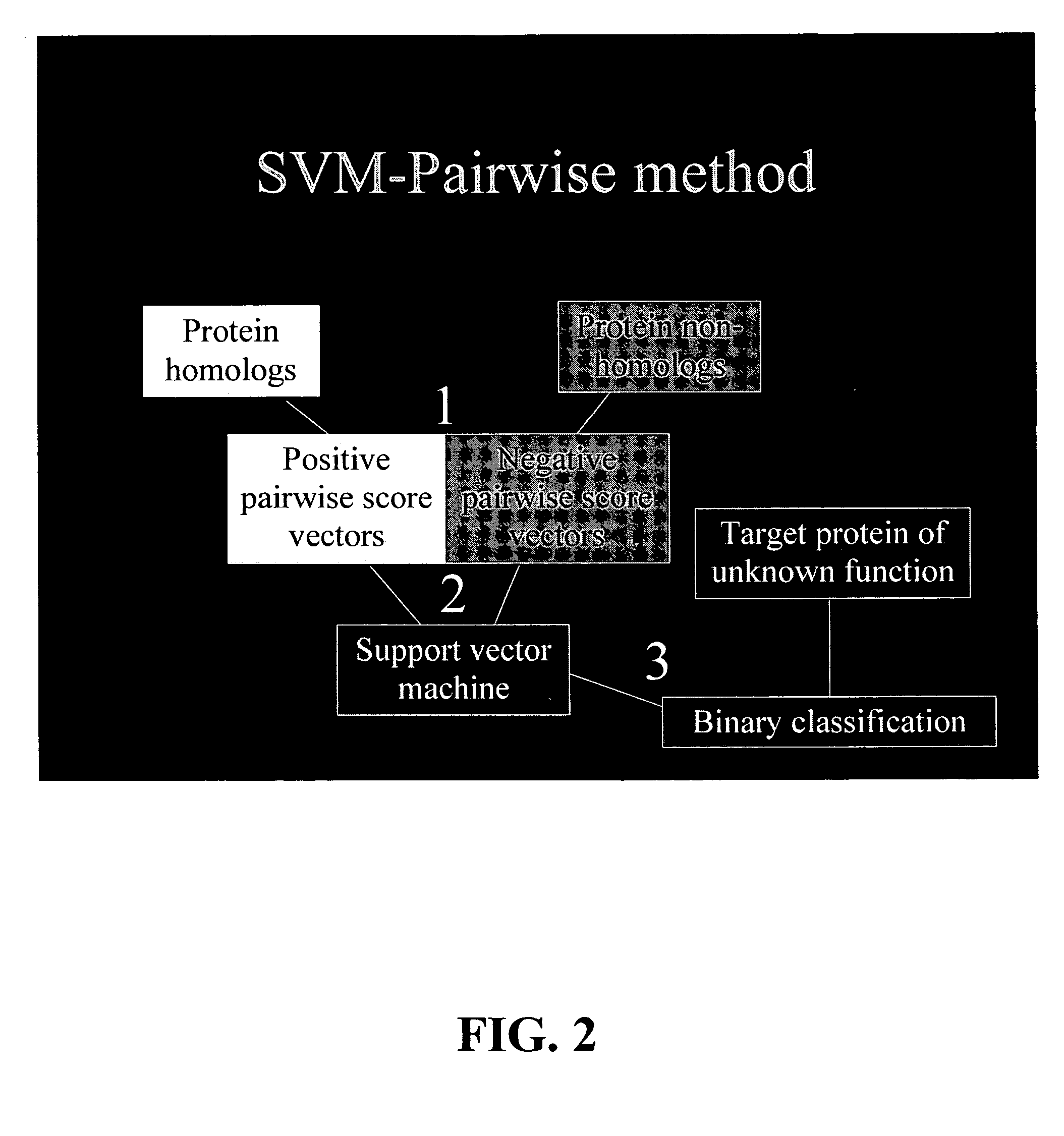Computational method for detecting remote sequence homology
a remote sequence and sequence technology, applied in bioinformatics, instruments, fermentation, etc., can solve the problems of inability to detect protein homology and profile alignment, and achieve the effect of improving the detection accuracy, improving the recognition of protein folds, and improving the detection of remote sequence homologies
- Summary
- Abstract
- Description
- Claims
- Application Information
AI Technical Summary
Benefits of technology
Problems solved by technology
Method used
Image
Examples
example 1
Comparison of Sequence Homology Detection of SVM-pairwise with 6 Other Algorithms
[0043] Methods: The following experiments compare the performance over SVM-pairwise with six other algorithms including SVM-Fisher, PSI-BLAST, SAM, FPS and a simplified version of SVM-pairwise, called SVM-pairwise+, and KNN-pairwise. The SVM-pairwise+ algorithm is identical to SVM-pairwise, except that the vectorization set of proteins consists of only the positive members of the training set, rather than the entire training set. The KNN-pairwise algorithm replaces the SVM with the k-nearest neighbor algorithm. This discriminative classification algorithm predicts the label of previously unseen test example by a weighted vote among the k training set examples that are closest to the test example. The discriminant value produced by KNN is simply the sum of these votes (1 for positive and −1 for negative), weighted by their distance from the test example. In this implementation, k=3 is used. Table 1 belo...
PUM
 Login to View More
Login to View More Abstract
Description
Claims
Application Information
 Login to View More
Login to View More - R&D
- Intellectual Property
- Life Sciences
- Materials
- Tech Scout
- Unparalleled Data Quality
- Higher Quality Content
- 60% Fewer Hallucinations
Browse by: Latest US Patents, China's latest patents, Technical Efficacy Thesaurus, Application Domain, Technology Topic, Popular Technical Reports.
© 2025 PatSnap. All rights reserved.Legal|Privacy policy|Modern Slavery Act Transparency Statement|Sitemap|About US| Contact US: help@patsnap.com



